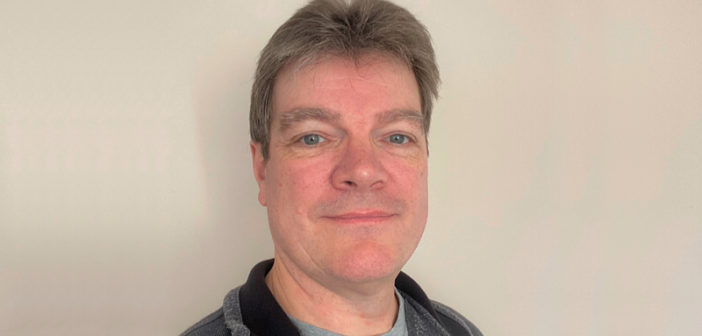1. What is your name and position within Hexagon’s Manufacturing Intelligence division?
My name is Mark Taylor and I am the Strategic Product Manager – Service Tools within Metrology Service and Support.
2. How did you get into this line of work?
It evolved really! I was promoted through a range of roles in the semiconductor space, from IT management through to project management. At my last company before Hexagon, I was in the medical devices and software industry and learned a great deal about SalesForce and ServiceMax through implementing them both whilst there, so I’ve brought that experience to Hexagon, which I joined in March 2020. Of course, given the global pandemic, I’ve been working from home for my entire Hexagon career up to now! That means our teams have had to adapt; getting projects up and running remotely has its challenges but probably helped drive more innovative and greener ways of working going forward.
3. What does your day-to-day look like at Hexagon?
My day involves all sorts really! I’m usually working on a lot of planning and deploying on the service and support applications, which are primarily the ServiceMax and Service Cloud solutions but does also include other service and support projects. There’s a lot of collaboration involved, particularly with other IT teams, to continually align on ERP and integrations and a lot of alignment with the business areas for the ongoing projects.
Testing our ServiceMax and Service Cloud systems is also a key part of my daily work. For example, we are currently deploying in Singapore, the UK, France, and Brazil, so we are continually configuring the system to maximise its effectiveness in the different regions. I have a lot of experience with ServiceMax so I like to get involved directly in the system to help and advise.
A central part of the role is strategic, supporting the realisation of our vision of a world-class service and support. What we’re aiming for is agility and standardisation of the processes and systems, removal of customisation and complexity, and to use as much of the inherent capabilities of the systems as possible. We’ve built a lot of the groundwork for this by modularising our approach to the projects for greater efficiency and project agility.
For the customer, this means we can capture data more reliably, so we can see their history and run reports more accurately. With a watertight, streamlined system, we can more easily identify spare capacity and maximise the utilisation of our engineers. This means reduced delays and a more efficient service for our customers.
There’s a phrase in the industry: ‘sweat the asset’. We pay a great deal of money for our systems, and an essential part of my day-to-day is making sure that Hexagon and our customers are getting the most out of the system.
4. How do you see service and support evolving over the next five years?
Service and support is shifting from a reactive to a more proactive and predictive model. Significant value will be driven by the ability to anticipate and address customer problems before they actually occur.
Another key area of development will be moving to more self-service-oriented models. Of course, in our day-to-day lives, when we want to know something we’ll Google it. From a technical perspective, we want service and support to be similarly simple for the customer and to put the capabilities for resolving issues in their hands. This will help them save time and ultimately build-up their in-house expertise.
I expect these models will be driven by increasing capabilities in real-time communication and automation. But achieving these enhancements involves having the right data in place and reaching a certain level of maturity in the systems.
5. What are your future goals?
To get our service and support systems deployed globally and continually enhance them with the capabilities available to us now as well as future capability from the system suppliers. My goal is to make these systems robust and enhance them while retaining the data integrity we build in as part of the deployment projects . I want us to move forward together to achieve a globally-aligned service and support organisation.
6. What do you do for fun outside of working at Hexagon?
Well, family and work keep me very busy, but in between time I’m really into cycling, running astronomy, and DIY. I’ve also been a governor for a school for around 11 years.
7. What is something that most people don’t know about you?
I lived and worked in Japan for two and a half years. My Japanese is a bit rusty now, but I could speak Japanese and got quite good at reading in the three Japanese writing systems. I’ve also lived and worked in Texas for seven years when I was in the Semiconductor industry where I coordinated all the engineering projects my organisation had underway with Intel.














